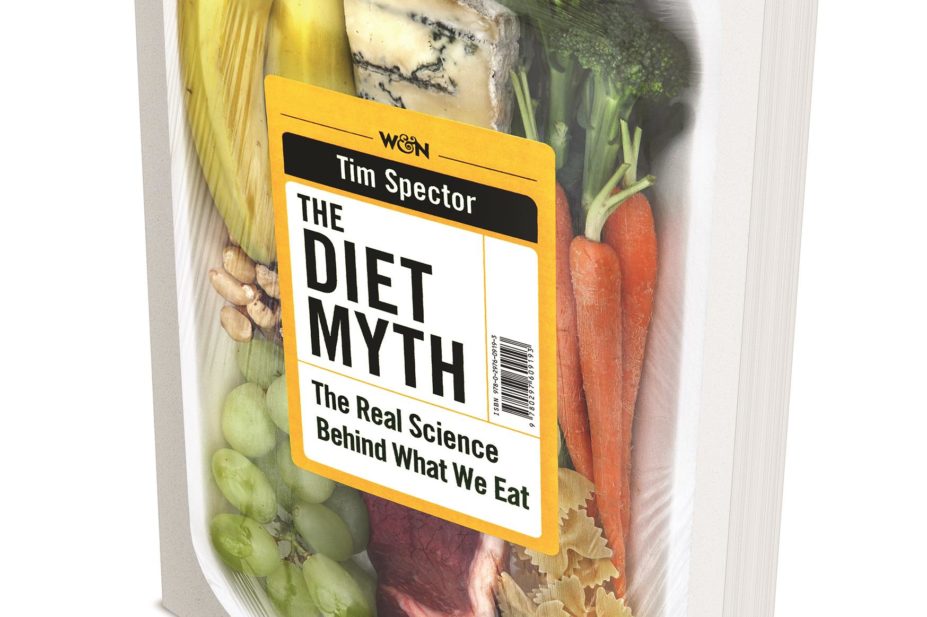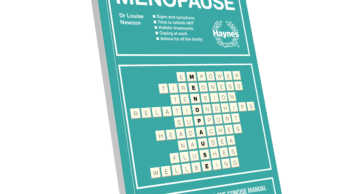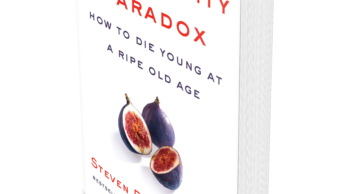
The new year provides many of us with the opportunity to try to shed the excess pounds accrued through overindulgence during the festive period. However, trying to decide on a suitable diet is far from easy because there are so many to choose from. Should it be low carbohydrate, low fat, high protein, or a 5:2 intermittent fasting regimen? Which diet is most likely to help us achieve our weight loss goals?
According to this new book by physician and genetic epidemiologist Tim Spector, it seems that it does not matter which routine you choose because there is one factor which none of the current diets considers: your gut bacteria. Emerging evidence suggests that this whole microbiological community or microbiome plays a more important role than we think. Much of the interest in the role of the microbiome comes from studies in specially bred germ-free mice. For example, such mice have acute anxiety, chronic gut and general inflammation, as well as reduced levels of brain growth hormones. Such deficiencies and health improvements can be derived from addition of diets rich in certain types of bacteria.
Spector starts off by explaining how the current paradigm of eating less and moving more and, in particular, calorie counting, is unlikely to help us to lose weight. This is because every diet fails in time simply because the body compensates by reducing the metabolic rate and energy expenditure. Subsequent chapters provide a useful overview of the value and role of a wide range of foods such as fats, carbohydrates, proteins, alcohol, nuts, as well as our desire to consume vitamin supplements (hint: it is a waste of time and money) in the diet and how these impact on health.
Each of the chapters invariably returns to Spector’s real interest, which is the role of the microbiome. Although accepting that our genes have an important effect on how we respond to food on an individual basis, our microbiome is more important to our health. Spector argues that the key to health and well-being is related to having a diverse microbiome. For instance, certain organisms within the microbiome can breakdown food containing carbohydrates, fibre and polyphenols and produce short chain fatty acids such as butyrate, which has antioxidant and anti-inflammatory properties. Indeed, the low incidence of heart disease, type 2 diabetes and mental health conditions such as dementia and Alzheimer’s disease in populations who consume a Mediterranean or traditional tribal diet may owe more to the diversity of their microbiome than any specific dietary factor. Many people turn to yoghurts with added probiotics to improve their microbiome. But, as Spector cautions, there is little good evidence that, for healthy people, such an approach is worthwhile, but watch this space. For those interested — and thanks to the British Gut project (an open source crowdfunded project run by the Department of Twin Research at King’s College London in conjunction with the American Gut project) — anyone can send off a sample and have their gut microbiome analysed.
The book contains a great deal of dietary facts and information and, being fully referenced, makes for an interesting read. As the diversity of our microbiome has been declining over the years, this fact alone could be an important contributor to the increase in conditions such as auto-immune disease, type 2 diabetes, cognitive impairment and obesity. This is a fascinating book and clearly an area that needs further research. We all know that healthy eating is good for us but what we did not know was how it makes a difference. So perhaps one of this year’s resolutions should be to spruce up our microbiome. Not catchy, but possibly worthwhile.
References
‘The diet myth: the real science behind what we eat’ by Tim Spector. Pp 284. Price £14.99. London: Weidenfeld & Nicolson; 2015. ISBN 978 0 2976 0919 3.


